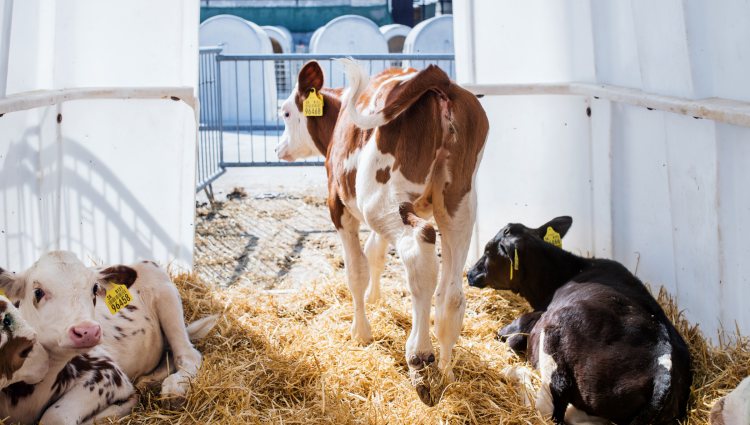Beef-on-Dairy: Breeding Decisions Today for the Future

Beef and Calf Prices Continue to Climb
Beef prices — for both livestock producers and consumers — have been on the rise for the past six years. While dairy producers have historically had limited involvement in the beef industry, today’s strong prices make it increasingly important to maximize returns from both calves and cows leaving the farm.
Fifteen years ago, the value gap between dairy calves and beef-on-dairy calves was minimal, with prices typically under $200 per calf. As shown in Figure 1, prices for both dairy and beef-on-dairy calves have climbed steadily since then, but the value of beef-on-dairy calves has consistently outpaced their dairy counterparts.
Although this data reflects conventional calves, organic markets tend to follow similar trends — particularly during periods of high prices and tight supply. Recent data from the FINBIN database shows that organic calf and cull cow sales, as a percentage of gross margin, closely mirror those of conventional herds (FINBIN, 2025). Both markets have seen these percentages double in the past five years, with continued strength expected through the end of 2025.
Figure 1: 15-Year Historical Dairy Calf and Beef-on-Dairy Calf Prices

Source: USDA, AMS 2025. “National Dairy Comprehensive Report.” https://www.ams.usda.gov
Why Beef-on-Dairy Calves Are in Demand
Beef-on-dairy calves are in high demand due to historically low numbers of beef replacement heifers (Figure 2). In 2025, replacement heifers made up just 14% of the national beef herd, meaning fewer than one in seven beef calves were retained as replacements. Without more heifers entering the system, the beef industry must continue sourcing calves elsewhere, such as from beef-on-dairy programs.
Imports of feeder calves have also been constrained by health and biosecurity concerns, particularly from traditional suppliers like Mexico. These challenges are expected to keep domestic calf supplies tight and prices elevated, even as demand remains strong. As with any commodity, fluctuations in supply or demand will ripple through the broader market, influencing profitability across both beef and dairy sectors.
Figure 2: 40-Year Historical Trend for U.S. Ratio of Beef Replacement Heifers

How Dairy Producers Can Benefit
Calf and cull cow sales can significantly strengthen the net margins of both conventional and organic dairies. To fully capture these opportunities, producers should carefully evaluate their replacement heifer program before breeding for beef.
Understanding herd dynamics, including how many heifers are needed to sustain the milking herd, is critical. Several factors influence how many calves are required and how many ultimately enter milk production, including:
- Average calving interval: How frequently cows produce a calf
- Age at first calving
- Percentage of heifer calves born
- Calf mortality rate
In addition, factors from the adult herd affect replacement needs, such as:
- Culling rate
- Age at first calving
- Non-completion rate of heifers (those that leave the system before entering the milking herd)
A thorough evaluation of both the heifer program and herd management practices ensures the operation maintains the optimal number of replacements. Once that foundation is established, dairies can explore beef-on-dairy breeding opportunities with greater confidence.
However, these decisions carry financial implications. Raising too many heifers increases costs — feed, supplies, and labor — that may not be offset by older animal sales. Conversely, maintaining too few replacements can drive up expenses from purchasing outside animals, elevate veterinary costs due to biosecurity risks, and reduce income from cull sales.
In Summary
In recent years, dairy operations have seen stronger profits from calf and cull cow markets — and prices are expected to remain favorable in the near term. Dairies that optimize reproductive performance and maintain a balanced replacement heifer program will be well-positioned to capitalize on these trends, enhance profitability, and secure a more resilient financial future.
Ready to evaluate your herd’s replacement strategy or explore beef-on-dairy breeding options?
Our experienced dairy team is here to help you make data-driven decisions that strengthen your operation. Give us a call at 888.339.3334 and ask to speak with a member of the team today.